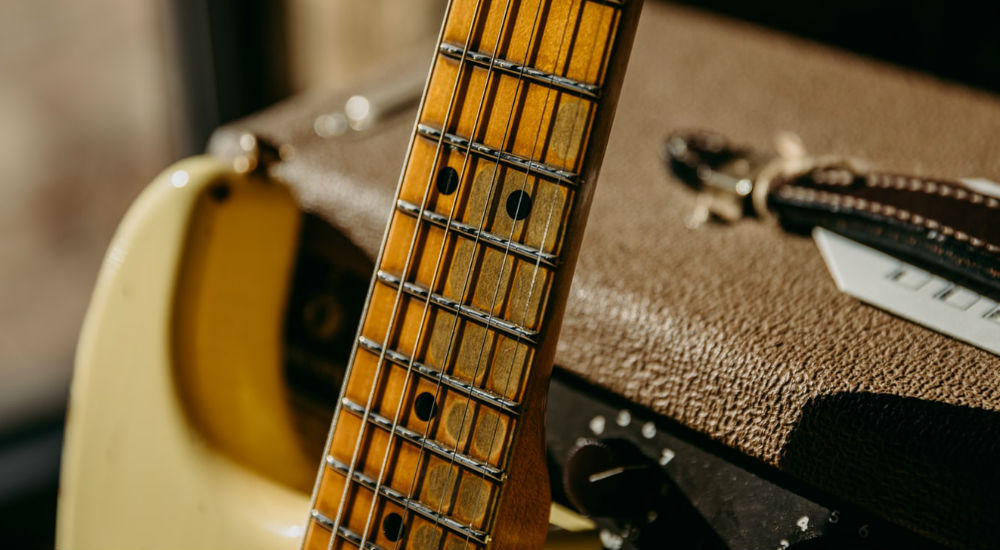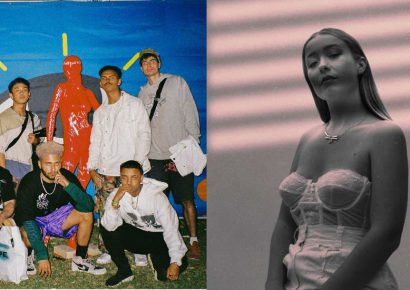Production wise guitar is often used for its percussive properties (which can be a nice contrast to keyboard sounds). Let’s take a look at some examples that might get you into the groove.
Figure A is a four bar E minor sounding lick. Try playing this really staccato (short and sharp) with a combination of left and right hand muting – think Daft Punk, early Michael Jackson and Basement Jaxx (amongst thousands of others). The syncopated feel can sit really nicely over a straight drum groove and/or more legato synth part/bass line. A Strat would be a good starting point tone wise, try the second or fourth pickup position, a clean sound with a little reverb and compression to really emphasise the attack on the note and squash the dynamics! Super, crisp and clean works a treat.
Figure B utilises chords in a disco/electro/funk style. Semi quavers and syncopated off beats make this idea really groove. Again, muting for the shorter notes works well before the contrast of the longer tied F#m7 chord in bar two. Nile Rodgers was one of the players that helped bring this sound into modern electronic music. For a little inspiration check out his work with the band Chic to hear it in a ‘70s funk music context.
Figure C takes more of a neo-soul/funk/jazz perspective. A descending chordal lick try to hammer on/pull off the high D and B on the Em7 chord and C and A on the Dm7. You can also try sliding into the Cmaj7 and Fmaj7 from a semi tone below. Licks on Kendrick Lamar, Frank Ocean, Hiatus Kaiyote and Tom Misch often utilise clean archtop and Strat tones with reverb and delay. Technique wise there is the subtle pushing and pulling of time (a la D’Angelo, Questlove etc) so try ‘floating’ a little through the A-G-E-D lick but make sure you then nail Beat One of the next bar. Guitarists such as Misch, Isaiah Sharkey and Mateus Asato make great use of chromatic slides in notes and chords, hammer-ons/pull offs and extended voicings to add a complexity to the overall sound.
Lastly, where would we be without these types of voicings in Figure D? Literally splattered across Pop, Rock and Electronic music for the last few years these simple two note voicings are easy to play and great tools for song writing. Essentially Major or minor 3rds they are sometimes referred to as ‘10th’s (meaning the interval from the lower note to the top note) and are used to outline chords simply rather than using a fuller sounding chord. Sometimes heard on acoustic guitar these also sound great doubled on harder edged synths for big build ups and pumping dance progressions.
These are just some ideas – the best part is that there aren’t really any limits when it comes to electronic production. You can play literal guitar parts or chop them/sample them/obliterate them into whatever you hear!
Revisit last month’s guitar lesson here.











